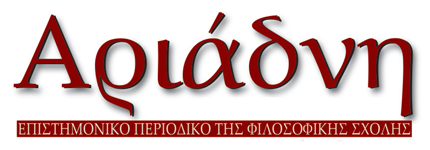Ο χορός στην Οπερέττα: Η ανάδυση των Ελλήνων χορογράφων στη δεκαετία του 1930
DOI:
https://doi.org/10.26248/ariadne.v13i0.947Περίληψη
THIS ARTICLE describes the consolidation of Greek choreographers during the second decade of the Interwar period in Greece, mainly in the light musical theatre. It seeks to examine the sudden rise of Greek choreographers from 4-6 to 15 that took place in the 1930’s. This fact in combination with the exile of the foreign actors and choreographers, which was the result of law passed by the I. Metaxas dictatorship, gave the opportunity to their Greek colleagues to dominate the Greek scene. This law offered considerable advantage to a new team of choreographers who had not yet started their career on stage by establishing a modern-dance school. These dance-schools were not connected with professional theatre life prior to the enforcement of this law. Since then every dancer was obliged to undergo professional training in these schools and acquire a work permit document. Thus the dance-schools managed to live through the economic crisis period and also replace the theatre scene connoisseurs who came mainly from the light musical theatre with a new generation of well-trained as well as professional artists, of a higher social ranking. This change, imposed by the state, was part of a general social and theatre development and, also, part of an effort to modernize theatre and social life in Greece.
Λήψεις
Δημοσίευση
Πώς να δημιουργήσετε Αναφορές
Τεύχος
Ενότητα
Άδεια
Οι εργασίες που δημοσιεύονται στο περιοδικό μπορούν να χρησιμοποιηθούν ελεύθερα για μη-εμπορικούς σκοπούς με την προϋπόθεση ότι γίνεται αναφορά στους συγγραφείς και την πρώτη δημοσίευση. Στην περίπτωση που το άρθρο αλλοιωθεί, τροποποιηθεί ή δημιουργηθεί κάτι νέο βασισμένο στο αρχικό, το έργο που θα προκύψει θα μπορεί να διανεμηθεί μόνο με την ίδια ή παρόμοια άδεια (Creative Commons Attribution-NonCommercial-ShareAlike 4.0 International License).


